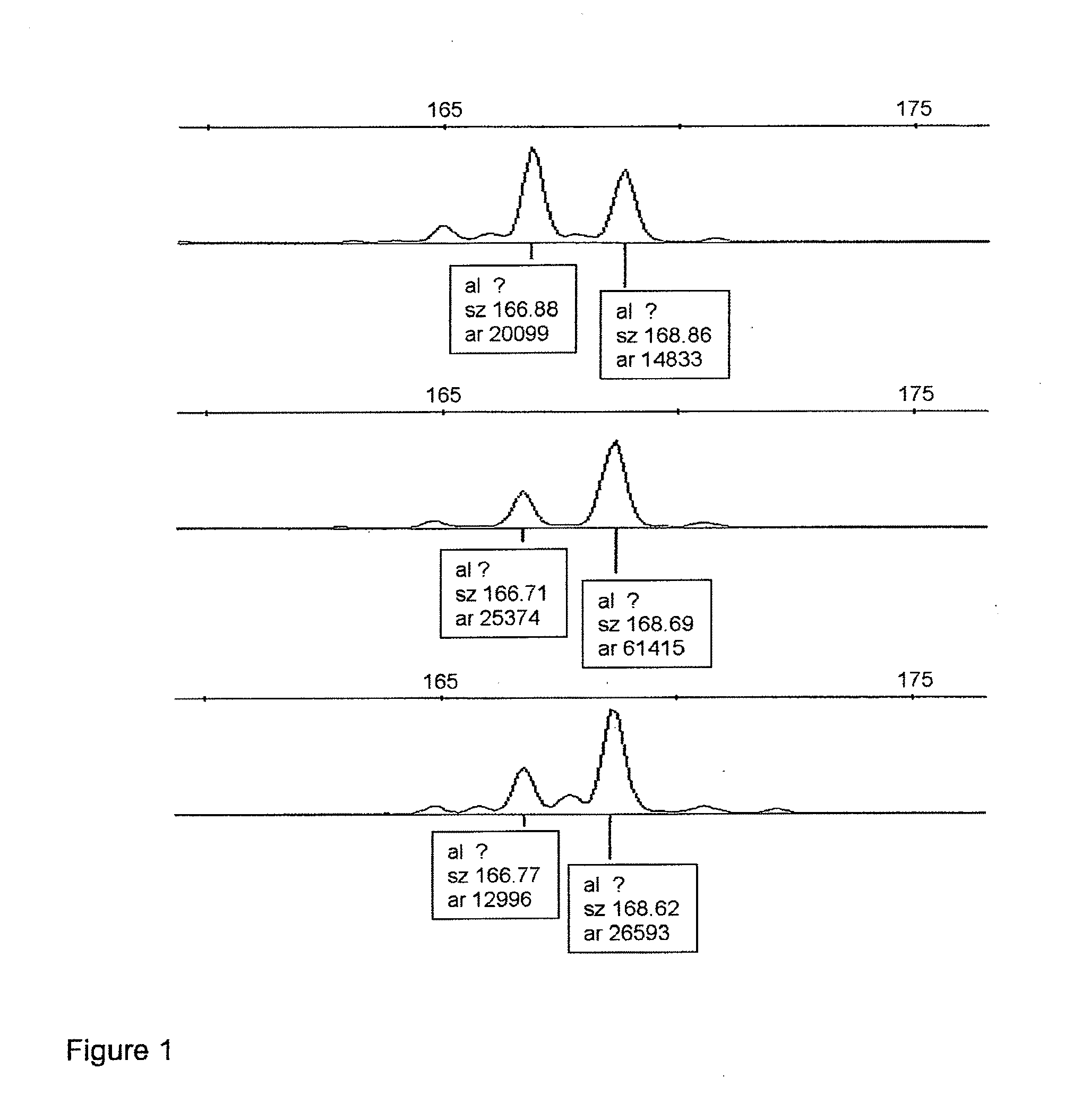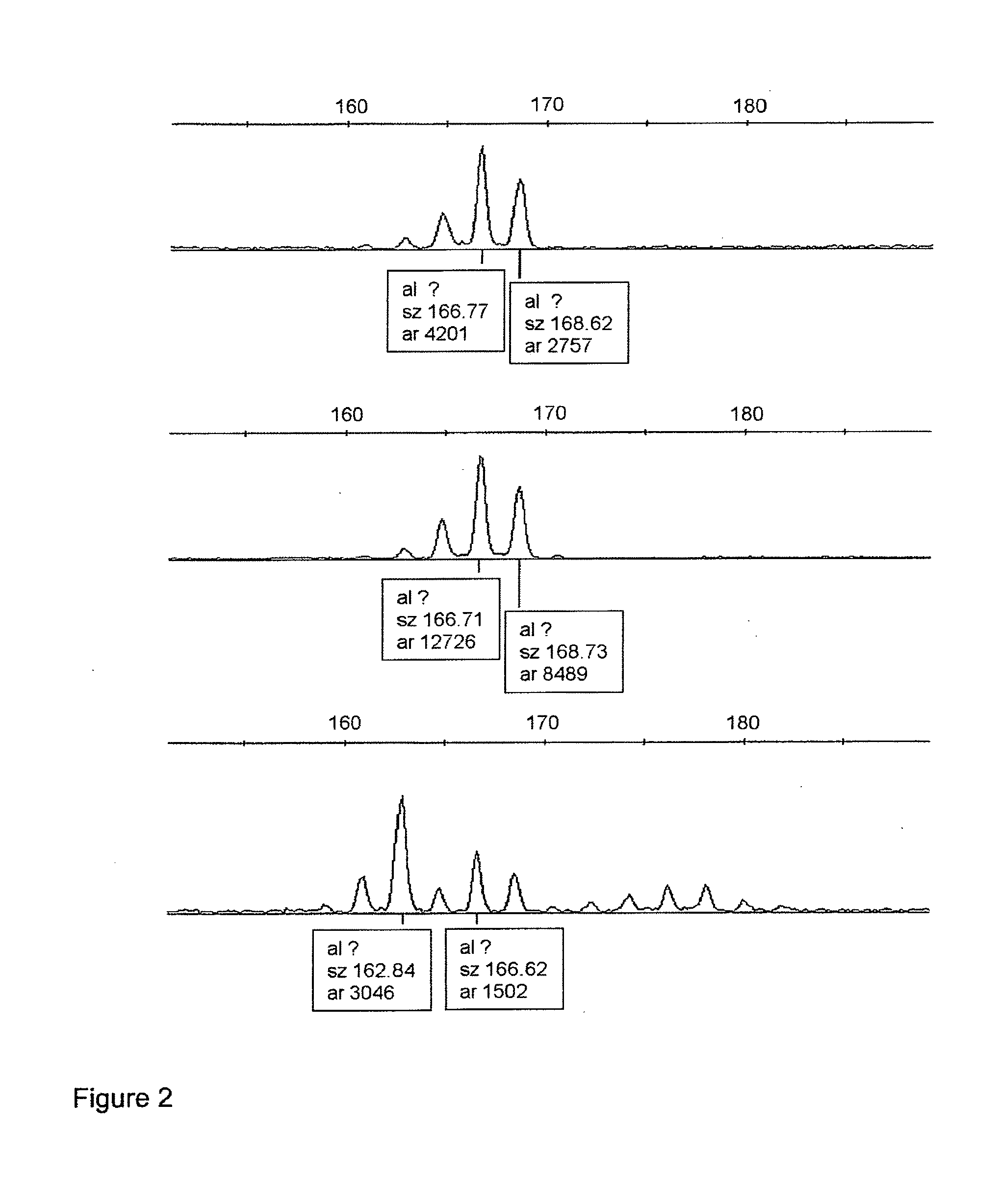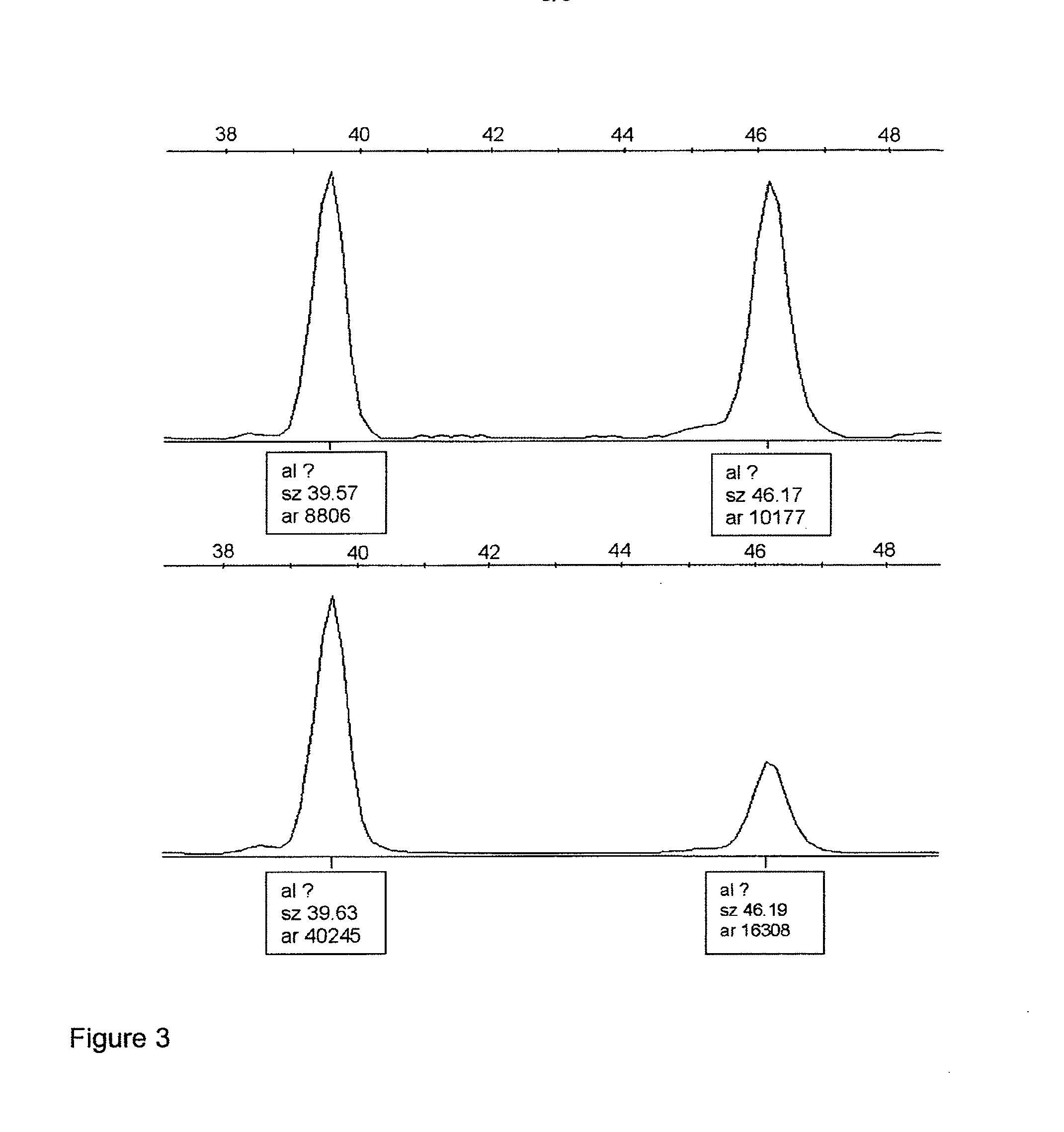Methods and uses involving genetic abnormalities at chromosome 12
a technology of chromosome 12 and genetic abnormalities, applied in the field of genetics and oncology, can solve the problems of hampered use and lack of clinical validation, and achieve the effect of prolonging the remission stage of the disease and recovering the patien
- Summary
- Abstract
- Description
- Claims
- Application Information
AI Technical Summary
Benefits of technology
Problems solved by technology
Method used
Image
Examples
example 1
a) NAV3 Loss of Heterozygosity (LOH) Analysis Using Microsatellite Markers
[0084]Histology of the formalin-fixed paraffin-embedded tissue samples was verified by a histopathologist. Tumors, adenomas or normal areas were dissected out to get pure normal or at least 50% ratio of carcinoma or adenoma tissue for the DNA preparation according to a standard protocol. Paraffin embedded sections were cut at 10 μm thickness and DNA was purified from these following standard protocols (Isola et al. Am J Pathol 145: 1301-1308, 1994).
[0085]LOH analysis was performed for NAV3 gene. Three microsatellite markers spanning the NAV3 gene locus at 12q21.1-q21.31 and surrounding the gene from both directions (physical distances between loci in mega-bases according to http: / / www.ensembl.org are given in parentheses) were chosen: pter D12S1684-(0.8 Mb)-D12S326-(0.2 Mb)-NAV3-(3.8 Mb)-D12S1708 qter. The DNA samples were amplified by polymerase chain reaction (PCR) using the following primers: D12S1684F 5′cc...
example 2
a) NAV3 LOH Analysis of Colorectal Tumor Series
[0091]Three series (designated here A, B and C) were examined:
[0092]Series A: Consecutive series of 56 colorectal carcinomas and 21 adenomas (total no=77) from 59 patients. Adenomas and carcinomas arising in the same patients were available in 10 out of the 59 cases. Judged only by the instability at the three chromosome 12 microsatellite loci examined, all of the adenomas were MSS while 14 of the 56 carcinomas showed MSI at one or more marker(s) (25%).
[0093]Series B: Well-characterized series of familial colorectal tumors that tested negative for mismatch repair gene germline mutations. This consisted of 18 MSS carcinomas, 1 MSI carcinoma and 4 MSS adenomas (total number=23 tumors). This series has previously been characterized for the common molecular changes in colorectal carcinogenesis.
[0094]Series C: Well-characterized series of MSI-colorectal cancers arising in HNPCC families with proven MMR gene germline mutations (total number=2...
example 3
NAV3 Deletion in Colorectal Tumors Detected by FISH
Samples
[0102]Samples for the FISH (fluorescence in-situ hybridization) assay were prepared from 18 randomly selected colorectal carcinoma cases from series A (described in Example 2a) and from seven cases with skin samples obtained from patients suffering from chronic eczema, a non-malignant inflammatory lesion as a negative control. All tissue samples had been processed by routine formalin fixation and embedded in paraffin.
Preparation of Nuclei from Paraffin Embedded Tissue
[0103]50 μm sections were cut from formalin-fixed paraffin embedded tissue. After deparaffinization each section was digested with protease XXIV (Sigma) at +37° C. for 30 minutes. After enzymatic digestion, nuclei were pelleted by centrifugation at 2000 g for 10 minutes and diluted in 0.1 M Iris-HCl, 0.07 M NaCl, pH 7.2. Nuclear suspension was pipetted on objective slides and dried over night at room temperature. The slides were fixed with 0.01% paraformaldehyde ...
PUM
| Property | Measurement | Unit |
|---|---|---|
| size | aaaaa | aaaaa |
| thickness | aaaaa | aaaaa |
| temperature | aaaaa | aaaaa |
Abstract
Description
Claims
Application Information
 Login to View More
Login to View More - R&D
- Intellectual Property
- Life Sciences
- Materials
- Tech Scout
- Unparalleled Data Quality
- Higher Quality Content
- 60% Fewer Hallucinations
Browse by: Latest US Patents, China's latest patents, Technical Efficacy Thesaurus, Application Domain, Technology Topic, Popular Technical Reports.
© 2025 PatSnap. All rights reserved.Legal|Privacy policy|Modern Slavery Act Transparency Statement|Sitemap|About US| Contact US: help@patsnap.com



